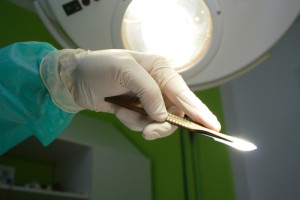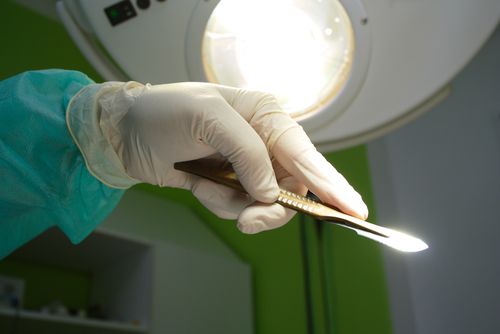 Results from the international, prospective, multicenter, randomized Phase III AMAROS (After Mapping of the Axilla: Radiotherapy Or Surgery?) trial were presented at the 2014 annual meeting of the American Society of Breast Surgeons (ASBS), showing that radiotherapy of the axillary lymph nodes causes significantly less morbidity and fewer complications than traditional axillary dissection or removal.
Results from the international, prospective, multicenter, randomized Phase III AMAROS (After Mapping of the Axilla: Radiotherapy Or Surgery?) trial were presented at the 2014 annual meeting of the American Society of Breast Surgeons (ASBS), showing that radiotherapy of the axillary lymph nodes causes significantly less morbidity and fewer complications than traditional axillary dissection or removal.
“The objective of this substudy was to analyze morbidity in both treatment groups, focusing on the short-term surgical complications, lymphedema of the ipsilateral arm and shoulder function,” lead researcher Mila Donker, MD, Netherlands Cancer Institute, Antoni Van Leeuwenhoek Hospital, Amsterdam said in the ASBS meeting, according to General Surgery News.
Of the 1,425 breast cancer patients who were positive for sentinel lymph node (SLN), 744 were randomized to axillary lymph node dissection (ALND) and 681 to axillary radiotherapy (ART). The primary and secondary endpoints were noninferiority in terms of axillary recurrence rate of ART to ALND and comparison of overall and disease-free survival, as well as morbidity and quality of life, respectively.
The data showed that patients who underwent ALND had an axillary recurrence rate of 0.43% while patients who underwent ART had a slightly higher, although not significant 1.19% rate.
[adrotate group=”1″]
However, regarding complications in those who underwent ALND or ART the results were significantly different, with an overall 23% complication rate in the ALND group compared with only 9% in the ART group. More specifically, between ALND and ART, hemorrhage occurred in 3.1% and 1.7%, postoperative infection occurred in 10.7% and 3.8%, and persistent seroma was seen in 10.4% and 1.3%, respectively.
Furthermore, in the following three months after surgery, patients who experienced lymph node dissection had increased early lymphedema, a swelling caused by a blockage in the lymphatic system.
To understand lymphedema incidence, patients were divided in three groups, observing an incidence of 25% in those who underwent ALND, 15% in those who underwent ART, and 59% in patients who had more than four positive nodes after ALND and received subsequent ART.
“The incidence of lymphedema was almost twice as high in the patients who had ALND compared with those treated only with radiation to the axilla; and in those who underwent both treatments, the incidence of lymphedema was almost three times that of patients who underwent only ART. And this persisted to five years after treatment”, Dr. Donker added.
The results from this trial support radiotherapy as the treatment of choice for SLN-positive breast cancer patients, avoiding combined therapy whenever possible. Even though associated with pain, numbness, limitation of arm range of motion and lymphedema, ALND is still frequently preformed.
“I believe that as a result of this trial, radiotherapy of the nodes will begin to replace surgery. The results are that definitive and significant for patients’ quality of life”, concluded Dr. Donker.


